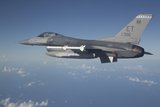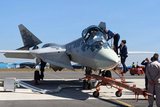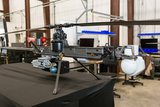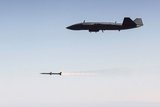Portugal may snub F-35 fighter jets in the face of Trump administration “unpredictability”
Portugal is looking to replace its F-16s in the early 2030s. (Photo: USAF)
Portugal has a fleet of 20 F-16 fighter aircraft left, of the 45 aircraft which entered service more than 20 years ago. And while they have undergone upgrades, they are expected to be replaced early in the 2030s.
The Lockheed Martin F-35 multirole fighter aircraft was considered the front runner to meet this need. In fact, in 2023 the Chief of Staff of the Portuguese Air Force (FAP), General João Guilherme Rosado Cartaxo Alves stated that the F-35A was the preferred choice.
In 2024, Gen. Alves added: “This process has already begun. We had a workshop here with Lockheed and the US Air Force to also learn what this leap to the fifth generation is.”
Related Articles
Portugal wants F-35s, but has no firm plans in place
Lockheed Martin takes financial hit amid ongoing F35 troubles
Trump offers F-35 to India, as US pledges to boost military sales by “billions”
Getting the F-35s in service in Portugal would cost around €5.5 billion (US$5.9 billion) over the next two decades, according to the General. At the time, he also said that the first aircraft could be delivered in seven years.
However, the future of the F-35A as the presumed aircraft to replace Portugal's F-16s was thrown into doubt this week after the nation’s Defence Minister, Nuno Melo, told Portuguese publication Publico that “the world has already changed” under the Trump administration.
Melo said: “[Portugal’s] F-16s are at the end of their cycle and we will have to think about replacing them. But, in our choices, we cannot be oblivious to the geopolitical environment.
“The recent position of the United States, in the context of NATO and at the international geostrategic level, has to make us think about the best options.”
A key issue noted by Melo was the need for predictability and the notion that the US would be by Portugal’s side. He argued that the change in the approach of the US under President Donald J Trump and Secretary of Defense Pete Hegseth had thrown that into doubt.
Melo refused to be drawn on specific alternatives, but said: “[There are] several options … namely in the context of European production and also taking into account the return that these options may have for the Portuguese economy.”
This hints at two or three main potential aircraft, namely the single-engine Saab Gripen, the larger Dassault Aviation Rafale, or the twin-engine Eurofighter Typhoon which is slightly larger again than the Rafale. In terms of empty weight, the single-engine F-16 falls among other two single-engine aircraft.
Related Programmes in Defence Insight
Related Equipment in Defence Insight
More from Air Warfare
-
![Anduril UK and GKN Aerospace collaborate on British Army ACP bid]()
Anduril UK and GKN Aerospace collaborate on British Army ACP bid
The pair will submit their demonstrator concept for Project Nyx, a development project for the British Army’s Land Autonomous Collaborative Platform.
-
![US Army command’s Picatinny CLIK common lethal drone interface makes progress]()
US Army command’s Picatinny CLIK common lethal drone interface makes progress
The Picatinny Common Lethality Integration Kit is designed to overcome the issue of unique integration methods between lethal payloads and drones as well as avoiding problematic acquisition conditions created by vendor lock.
-
![Australia invests extra A$1.4 billion in MQ-28A Ghost Bat after successful missile fire test]()
Australia invests extra A$1.4 billion in MQ-28A Ghost Bat after successful missile fire test
The investment includes new contracts for six MQ-28A Ghost Bat aircraft, as well as provisional funds to invest in the development of a Block 3 prototype.
-
![Northrop Grumman to fly new Project Talon CCA by late 2026]()
Northrop Grumman to fly new Project Talon CCA by late 2026
The newly unveiled collaborative combat aircraft looks to strike a balance between capability and cost-effectiveness, according to the company.
-
![MBDA and Lockheed move closer to F-35A Meteor flight tests]()
MBDA and Lockheed move closer to F-35A Meteor flight tests
Following the completion of successful ground tests, one more exercise remains before flight testing can begin.
























